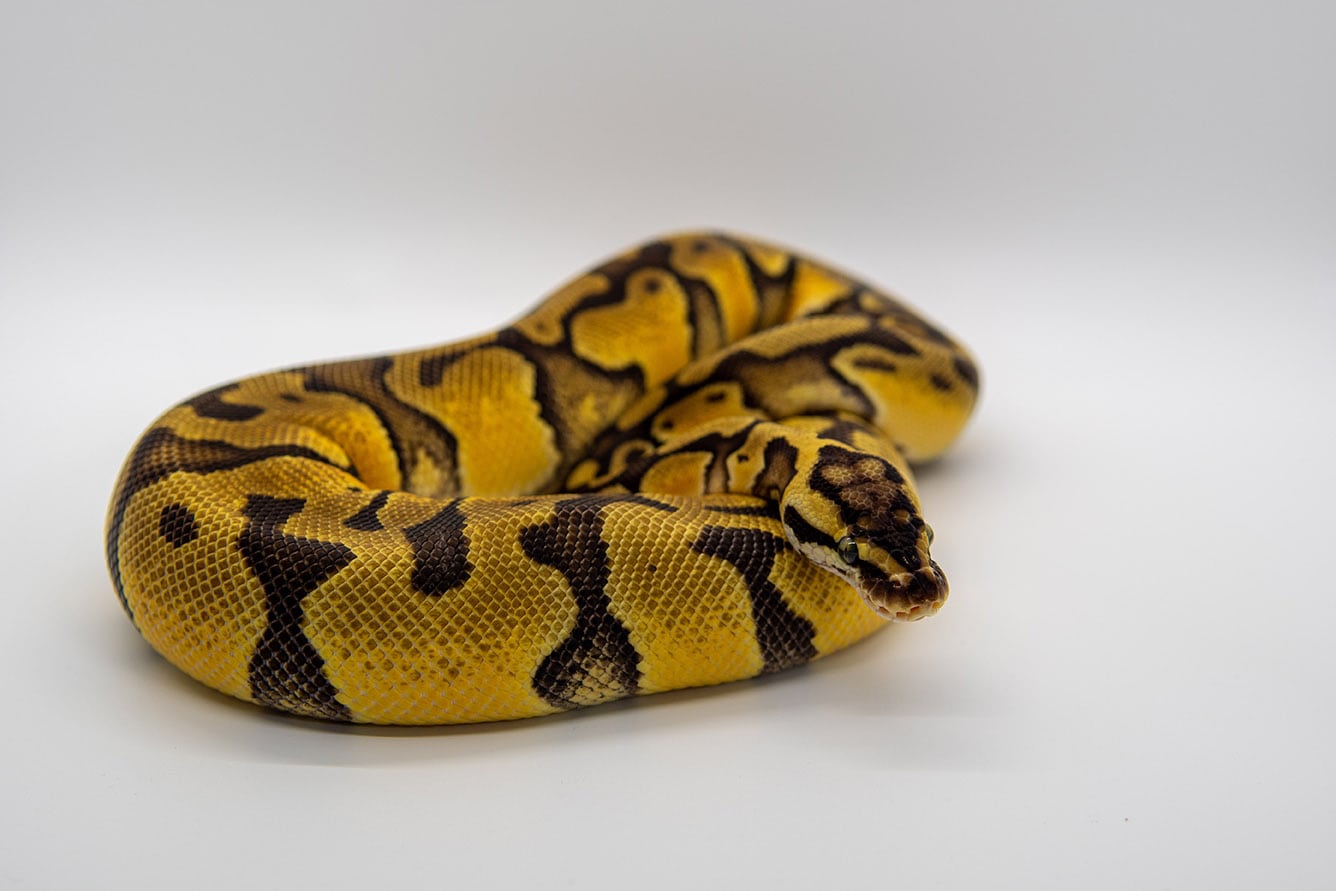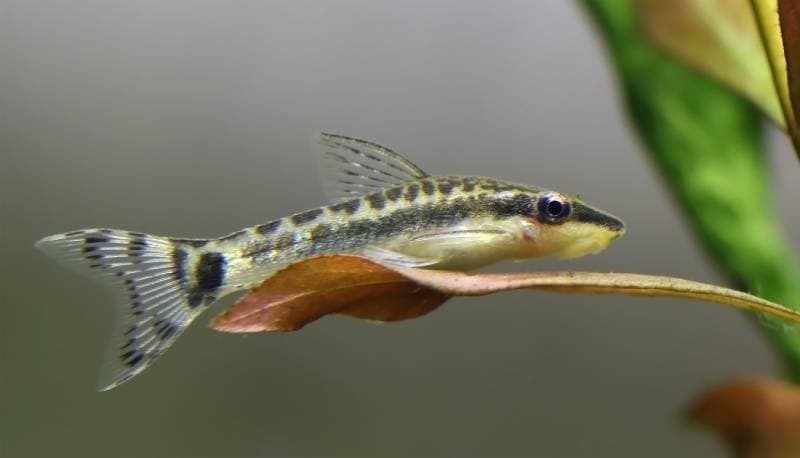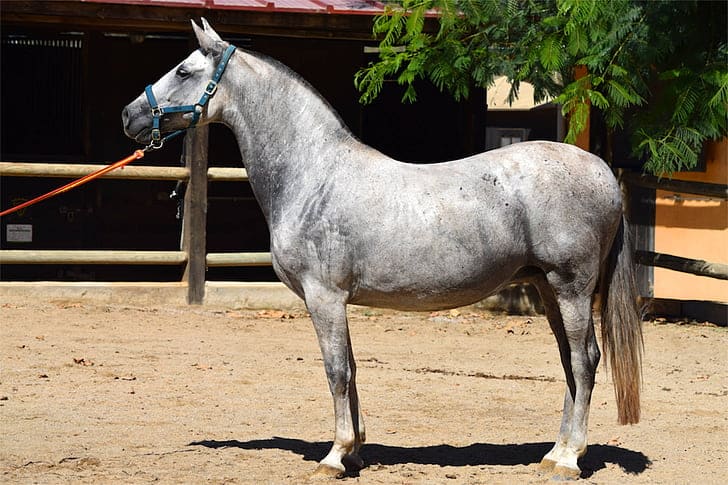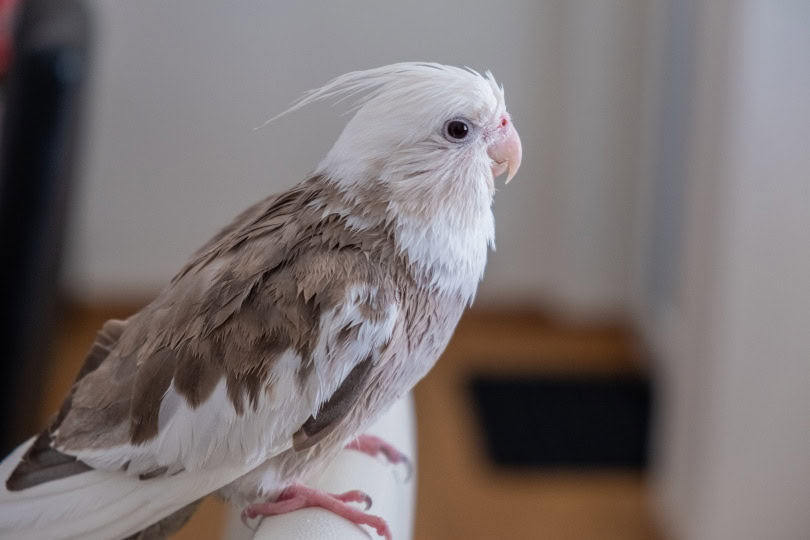Click to Skip Ahead
If you want to enter the snake-handling world, it’s hard to beat the Clown Ball Python Morph as your first snake. They’re incredibly colorful, have a mild temperament, and are relatively easy to care for.
But what do you need to know about these snakes before making a purchase? In this article, we’ll break down everything you need to know.

Quick Facts About the Clown Ball Python Morph
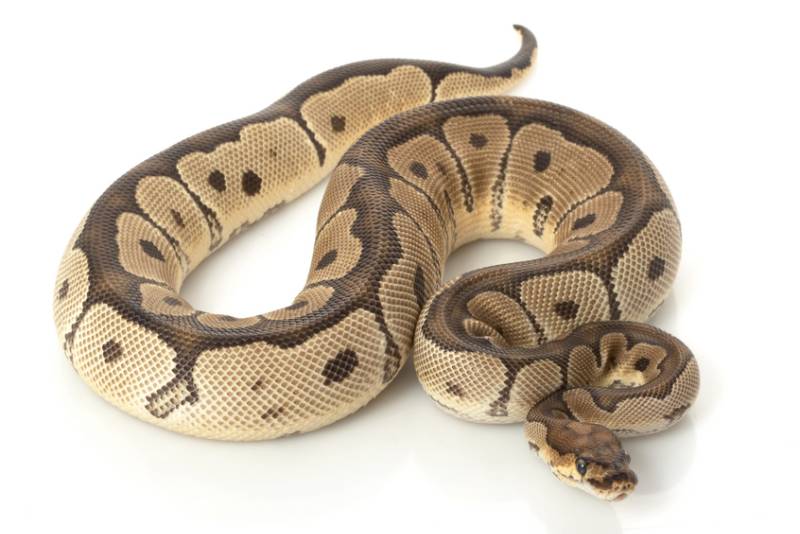
| Species Name: | Python regius |
| Common Name: | Clown Ball Python Morph |
| Care Level: | Low |
| Lifespan: | 20–30 years |
| Adult Size: | 3.5–5.5 feet |
| Diet: | Mice and rats |
| Minimum Tank Size: | 40-gallon tank |
| Temperature & Humidity: | Temperature gradient between 75- and 95 degrees Fahrenheit and a 55-60% humidity |
Do Clown Ball Python Morphs Make Good Pets?
A Clown Ball Python Morph is an outstanding choice if you want to add a snake to your home. They’re relatively easy to care for and have an easy-going temperament that’s perfect for novice snake handlers. You also get a snake with an impressive size and a long lifespan. Even better, you can handle Clown Ball Python Morphs, especially if you train them early.
Appearance
The Clown Ball Python Morph has a golden hue along their sides and a pronounced blotchy and wide dorsal stripe. However, they don’t typically have a dark lateral pattern, and if they do, it’s extraordinarily small.
These snakes have a unique appearance that makes them easy to identify and difficult to mistake for any other kind of snake.

How to Take Care of a Clown Ball Python Morph
Habitat, Tank Conditions & Setup
Tank
The size of an ideal terrarium for your Clown Ball Python Morph varies depending on the size of your snake. You want a terrarium that’s at least 2/3 the length of your snake but not larger than 1½ times the length of your snake. While you can go with a larger enclosure, you’ll need to invest in extra foliage and ensure that there are several places to hide.
Lighting
Your Clown Ball Python Morph does not require special lighting requirements. Just keep the enclosure away from direct sunlight since it can cause the tank to overheat and kill your Clown Ball Python Morph.
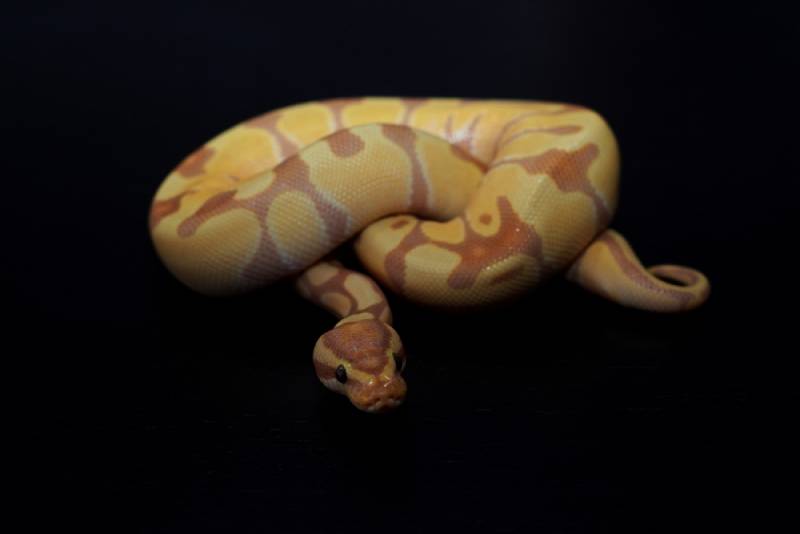
Heating (Temperature & Humidity)
As far as snake habitats go, the requirements of a Clown Ball Python Morph are relatively simple. They need an area to bask that’s close to 95 degrees Fahrenheit, and the temperature shouldn’t drop below 75 degrees Fahrenheit on the other side. We recommend keeping that side of the tank about 80 degrees Fahrenheit.
The humidity level is relatively low for a snake enclosure. Keep the level between 55% and 60% by misting occasionally.
Substrate
There’s no need to get picky with the substrate. As long as it’s porous and retains moisture, you’re good to go. Some types of mulch work well, but anything that you find at a local pet shop should work fine!
Tank Recommendations
| Tank Type: | Terrarium: 40 to 50 gallons |
| Lighting: | No special lighting requirements |
| Heating: | 95 to-75-degree Fahrenheit gradient; 55% to 60% humidity |
| Best Substrate: | Aspen shavings |

Feeding Your Clown Ball Python Morph
Feeding your Clown Ball Python Morph is easy. While they survive off a litany of small mammals in the wild, in captivity, they can live off a diet of nothing but mice and rats. Stick with mice when your Clown Ball Python Morph is young, but as soon as they’re large enough for rats, go ahead and switch.
You only need to feed an adult Clown Ball Python Morph about one rat a week. When they’re getting ready to shed their skin, they won’t eat as often. You can feed them live rats, but frozen or thawed rats are better because they can’t hurt your snake.
Some owners also recommend a dedicated feeding cage, so you don’t have to worry about getting bit when handling them in their regular cage.
Diet Summary
| Food Type | Percent of Diet |
| Mice and rats | 100% |
Keeping Your Clown Ball Python Morph Healthy
Clown Ball Python Morphs are not any more susceptible to health concerns than any other Python mix, which is to say they’re quite healthy and rarely have any problems.
Still, scale rot, respiratory infections, dermatitis, ticks, mites, and other parasites can become a problem, especially if you’re not maintaining their cage correctly. If you notice that your Clown Ball Python Morph is developing any health concerns, it’s time to take them to a vet specializing in exotic animals.
Look for signs of lethargy, a lack of appetite, bumps, or small parasites throughout the cage.
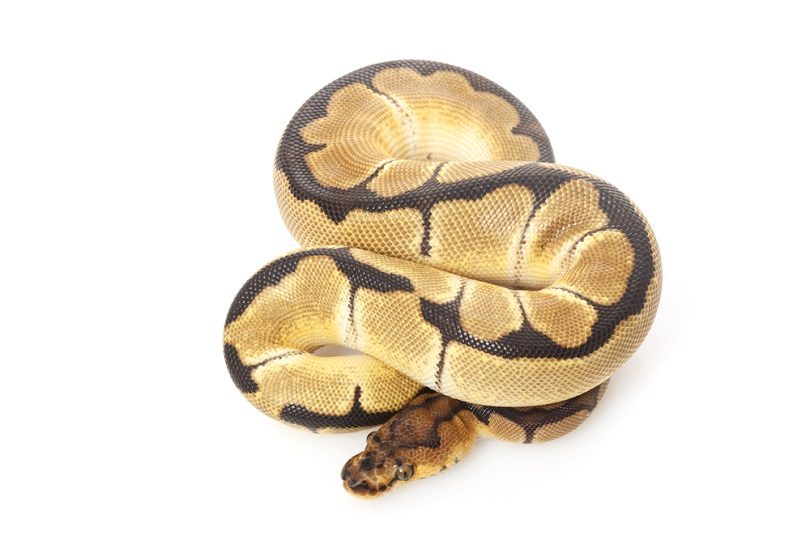
Common Health Issues
- Scale rot
- Respiratory infection
- Dermatitis
- Ticks
- Mites
- and other parasites
Lifespan
Clown Ball Python Morphs have a relatively long lifespan in captivity, ranging from 20 to 30 years. However, it’s not uncommon for these snakes to live longer than 30 years if they’re well cared for!
Remember this when purchasing a Clown Ball Python Morph, as you’ll be on the hook for caring for them for quite some time!
Breeding
While owning a Clown Ball Python Morph is relatively easy, breeding them is far from it. You need to find compatible snakes, and they shouldn’t remain in the same enclosure after mating. The eggs have a relatively long incubation period, followed by another few months before the eggs hatch.
Even then, Clown Ball Python Morphs can have anywhere from five to 30 offspring! After they’re born, they all need separate enclosures, and they’re independent as soon as they hatch. It’s quite a challenge for a novice snake handler, so leave it to experienced hands!

Are Clown Ball Python Morphs Friendly? Our Handling Advice
There are few snakes as friendly as the Clown Ball Python Morph. However, that doesn’t mean you can skip all precautions. Always wash your hands before handling them; if they smell food, it can trigger an eating response.
It’s best to have a dedicated feeding cage so you don’t get bit when reaching into their enclosure. Start handling your Clown Ball Python Morph as soon as possible, but keep the sessions short. You can extend the sessions over time; once they’re used to it, they won’t mind you handling them!
Shedding & Brumation: What to Expect
It’s essential to keep the enclosure at the proper humidity level and mist the tank occasionally to enable your Clown Ball Python Morph to shed their coat in one go. If the humidity level is too low, your Clown Ball Python Morph will shed in patches, which can lead to skin conditions that you’ll need to treat.
For brumation, lower the tank’s temperature a few degrees at a time over a few weeks and raise it a few degrees at a time at the end. During brumation, your Clown Ball Python Morph likely won’t eat and will become a bit more lethargic.
You can keep your Clown Ball Python Morph in brumation anywhere from 1 to 3 months.

How Much Do Clown Ball Python Morphs Cost?
Clown Ball Python Morphs are inexpensive compared to other reptiles, but they’re a bit pricey compared to other ball pythons. You can expect to spend anywhere from $200 to $350 for a Clown Ball Python Morph.
Considering how easy they are to care for, their unique coloring, and their long lifespan, it’s not a bad price!
Care Guide Summary
- Easy to take care of
- Long lifespan
- Friendly temperament
- More expensive ball python option
- Difficult to breed

Conclusion
Few pets are easier to care for than a Clown Ball Python Morph. Still, before heading out to purchase one, ensure you have everything you need to house them, as the costs can quickly add up. Ensure you can care for them for the rest of their lives. Since they have a long lifespan, the last thing you want is to have to rehome an older pet!
See Also:
- Banana Ball Python Morph: Facts, Info & Care Guide (With Pictures)
- 12 Rarest Ball Python Morphs (With Pictures)
Featured Image Credit: Mark10077, Shutterstock
